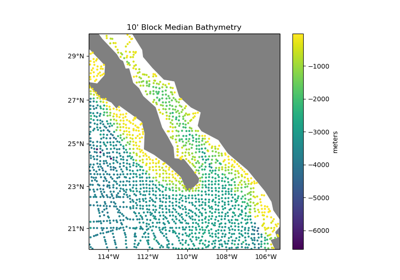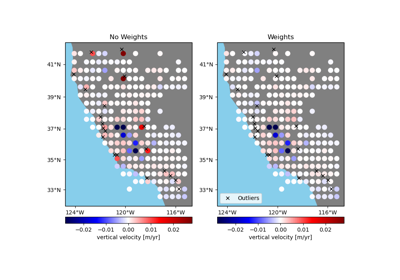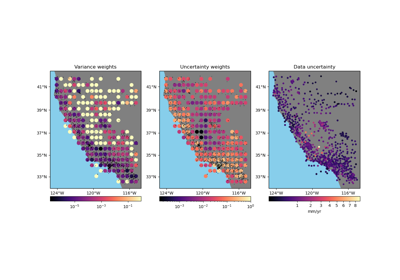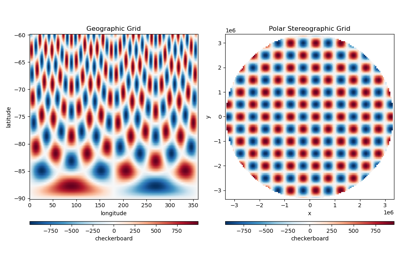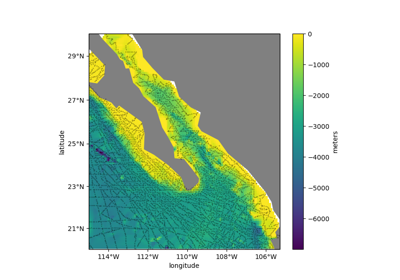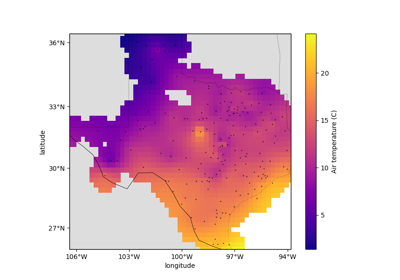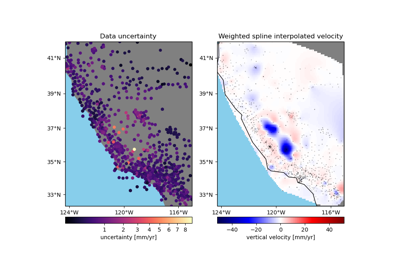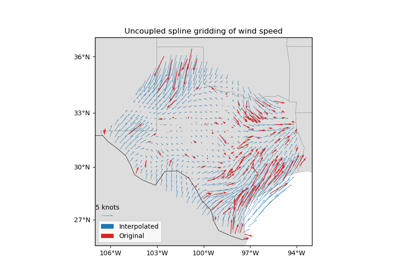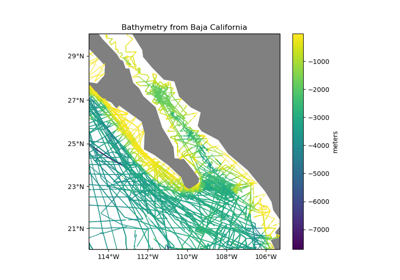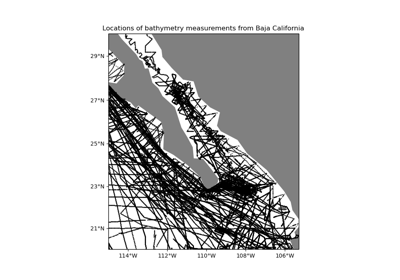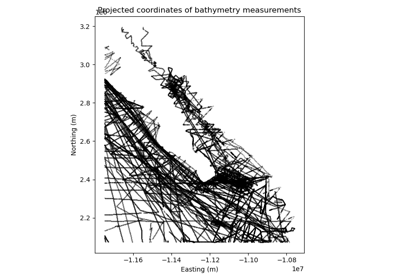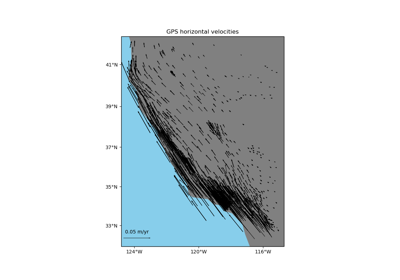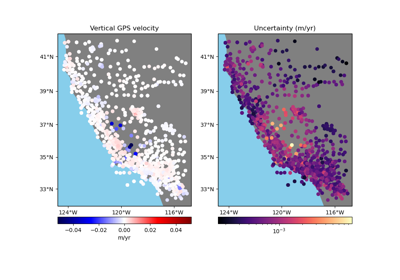verde.BlockReduce¶
-
class
verde.BlockReduce(reduction, spacing=None, region=None, adjust='spacing', center_coordinates=False, shape=None, drop_coords=True)[source]¶ Apply a reduction/aggregation operation to the data in blocks/windows.
Returns the reduced data value for each block along with the associated coordinates, which can be determined through the same reduction applied to the coordinates or as the center of each block.
If a data region to be divided into blocks is not given, it will be the bounding region of the data. When using this class to decimate data before gridding, it’s best to use the same region and spacing as the desired grid.
The size of the blocks can be specified by the spacing parameter. Alternatively, the number of blocks in the South-North and West-East directions can be specified using the shape parameter.
If the given region is not divisible by the spacing (block size), either the region or the spacing will have to be adjusted. By default, the spacing will be rounded to the nearest multiple. Optionally, the East and North boundaries of the region can be adjusted to fit the exact spacing given.
Blocks without any data are omitted from the output.
Implements the
filtermethod so it can be used withverde.Chain. Only acts during data fitting and is ignored during prediction.- Parameters
reduction (function) – A reduction function that takes an array and returns a single value (e.g.,
np.mean,np.median, etc).shape (tuple = (n_north, n_east) or None) – The number of blocks in the South-North and West-East directions, respectively.
spacing (float, tuple = (s_north, s_east), or None) – The block size in the South-North and West-East directions, respectively. A single value means that the size is equal in both directions.
region (list = [W, E, S, N]) – The boundaries of a given region in Cartesian or geographic coordinates.
adjust ({'spacing', 'region'}) – Whether to adjust the spacing or the region if required. Ignored if shape is given instead of spacing. Defaults to adjusting the spacing.
center_coordinates (bool) – If True, then the returned coordinates correspond to the center of each block. Otherwise, the coordinates are calculated by applying the same reduction operation to the input coordinates.
drop_coords (bool) – If True, only the reduced
eastingandnorthingcoordinates are returned, dropping any other ones. If False, all coordinates are reduced and returned. Default True.
See also
block_splitSplit a region into blocks and label points accordingly.
BlockMeanApply the mean in blocks. Will output weights.
verde.ChainApply filter operations successively on data.
Methods Summary
|
Apply the blocked aggregation to the given data. |
|
Get parameters for this estimator. |
|
Set the parameters of this estimator. |
-
BlockReduce.filter(coordinates, data, weights=None)[source]¶ Apply the blocked aggregation to the given data.
Returns the reduced data value for each block along with the associated coordinates, which can be determined through the same reduction applied to the coordinates or as the center of each block.
If weights are given, the reduction function must accept a
weightskeyword argument. The weights are passed in to the reduction but we have no generic way aggregating the weights or reporting uncertainties. For that, look to the specialized classes likeverde.BlockMean.- Parameters
coordinates (tuple of arrays) – Arrays with the coordinates of each data point. Should be in the following order: (easting, northing, vertical, …). Only easting and northing will be used to create the blocks. If
drop_coordsisFalse, all other coordinates will be reduced along with the data.data (array or tuple of arrays) – The data values at each point. If you want to reduce more than one data component, pass in multiple arrays as elements of a tuple. All arrays must have the same shape.
weights (None or array or tuple of arrays) – If not None, then the weights assigned to each data point. If more than one data component is provided, you must provide a weights array for each data component (if not None).
- Returns
blocked_coordinates (tuple of arrays) – Tuple containing arrays with the coordinates of each block that contains data. If
drop_coordsisTrue, the tuple will only contain (easting,northing). Ifdrop_coordsisFalse, it will contain (easting,northing,vertical, …).blocked_data (array) – The block reduced data values.
-
BlockReduce.get_params(deep=True)¶ Get parameters for this estimator.
- Parameters
deep (bool, default=True) – If True, will return the parameters for this estimator and contained subobjects that are estimators.
- Returns
params (mapping of string to any) – Parameter names mapped to their values.
-
BlockReduce.set_params(**params)¶ Set the parameters of this estimator.
The method works on simple estimators as well as on nested objects (such as pipelines). The latter have parameters of the form
<component>__<parameter>so that it’s possible to update each component of a nested object.- Parameters
**params (dict) – Estimator parameters.
- Returns
self (object) – Estimator instance.
